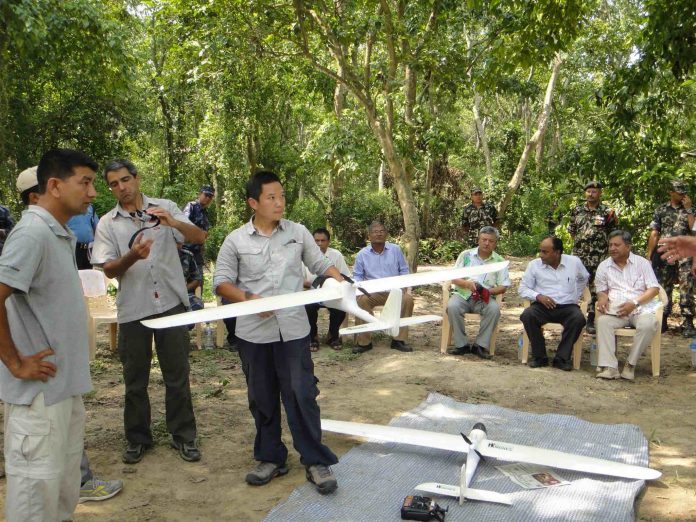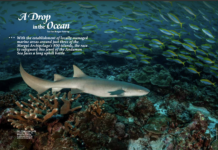Text and Photos Sarah Keenihan
A unique, low-cost approach to animal and forestry monitoring.
Lian Pin Koh is one half of the foundation team behind Conservation Drones, a novel and inexpensive approach to monitoring animals and habitats. He is also Associate Professor and Chair of the Applied Ecology and Conservation group (AEC) in the School of Earth and Environmental Sciences and the Environment Institute at the University of Adelaide, South Australia.
Working in 2011 with primate biologist Serge Wich to assess orangutan populations in illegally logged Asian forests, the two men came up with the idea of flying unmanned aerial vehicles (UAV) to count tree-mounted primate nests from the skies. However, explained Lian, speaking in August 2014 at the 7th Annual South Australian Spatial Information Day (SID2014), “drones are really expensive, and ecologists are really poor.”
The duo managed to come up with their first prototype for less than US$2000, and trialled it successfully in North Sumatra, Indonesia. The captured YouTube footage went viral, and led to the formation of
www.ConservationDrones.org as a worldwide initiative that seeks to build capacity in the developing tropics to use UAVs for conservation.
Lian is currently directly involved in two active animal conservation projects from his base in Adelaide. “We are working in Nepal to build UAVs for rangers to patrol their national parks,” he explains, noting that poaching of rhinos and elephants is an ongoing problem in Nepal. “Nobody is supposed to be in the national parks, so they use the UAVs to simply look out for people,” he adds.
Conservation drones are also being used to protect endangered cat populations. “We recently started a project in India, in a national park called the Panna Tiger Reserve,” says Lian. “They have 20 or so tigers there, and we track them to follow how well they are doing.”
Lian and his colleagues are also paving the way to apply drones for Australian conservation applications. “I’m establishing my group and sorting out the paperwork and regulations that are required to fly one of these things in Australia,” he says, adding, “The Civil Aviation Safety Authority requires permission and certification for flying. This is a good thing.”
Lian has already used his UAVs to conduct a small trial project looking at revegetation of mallee scrub after a bushfire, working at Calperum Station in the South Australian region called the Riverland. “The mallee work was on a very small scale, and we [were allowed to conduct the survey] as the drones remained within line of site,” he explains.
Having developed notoriety for their roles in spying and warfare, it seems drones have finally found an application that will give them an altogether better reputation.
For the rest of this article (Asian Geographic No.108 Issue 6 /2014 ) and other stories, check out our past issues here or download a digital copy here
The 25th anniversary of the largest and longest running dive show, Asia Dive Expo (ADEX) is set to occur on the 11-14th April 2019. Centred on the theme – Plastic free Future, ADEX is more than just a dive show with its commitment to the environment. Among an exciting lineup of programs, attendees can look forward to a Future Forward Series of Panel Discussion on the Single-Use Plastic Conundrum in Asia, on 13th April.
So join us at the event, get inspired and for all you know, you might just liberate the inner diver in you! More details of the event here.












